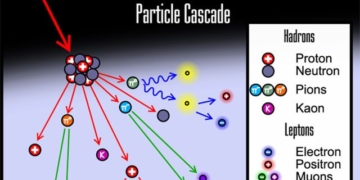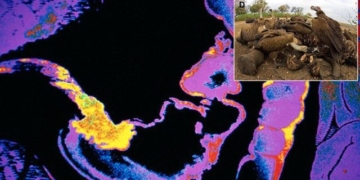The Pasteur Institute of Ho Chi Minh City has completed and reported to the Ministry of Science and Technology on the project “Research on Decoding the Genome of H5N1 Avian Influenza Virus in Human and Poultry Samples.”
 According to the research conducted by the molecular biology department at the Pasteur Institute of Ho Chi Minh City (from March 2004 to March 2005), 24 virus samples were decoded. Among these, 16 samples were from poultry and waterfowl, and five were from humans, all of which were fully decoded. The samples were collected from human and poultry patients in the southern region during the outbreak period from December 2003 to March 2005. The decoding revealed that all epidemic strains of the virus were still Type Z – the most common H5N1 virus type in the area since 2004.
According to the research conducted by the molecular biology department at the Pasteur Institute of Ho Chi Minh City (from March 2004 to March 2005), 24 virus samples were decoded. Among these, 16 samples were from poultry and waterfowl, and five were from humans, all of which were fully decoded. The samples were collected from human and poultry patients in the southern region during the outbreak period from December 2003 to March 2005. The decoding revealed that all epidemic strains of the virus were still Type Z – the most common H5N1 virus type in the area since 2004.
However, the study found that the H5N1 virus strains in humans, poultry, and waterfowl at the beginning of 2005 exhibited significant mutations, particularly in critical functional regions of the avian influenza virus genome, especially on surface antigens (HA, NA) and key host determination sites, as well as regions that regulate virulence (on the HA, PB2, NS genes).
Mutations were detected in the PB2 gene, allowing the virus to replicate efficiently in mammalian cells and exhibit high toxicity. Additionally, strains of the virus were found in deceased patients with numerous mutations across all genes.
These are signs that the virus has been and is integrating mutations to adapt to new hosts and increase virulence, indicating that the community may face the spread of H5N1 influenza from person to person. It is noteworthy that all Vietnamese strains in the study showed resistance mutations to antiviral drugs Amantadine and Rimantadine. Therefore, monitoring the virus’s resistance to Oseltamivir (Tamiflu) and stockpiling effective new antiviral medications is both necessary and urgent…
This study suggests that simultaneously decoding the entire genome of the virus isolated from both human patients and poultry will provide more comprehensive information about the circulating H5N1 influenza virus in Vietnam.
However, Dr. Cao Bao Van – head of the molecular biology department at the Pasteur Institute of Ho Chi Minh City and the principal investigator of this study – believes that the mutations allowing the virus to spread from human to human have not yet been identified, as there are still some questions that need to be answered: Can the virus strain accumulate mutations to create a variant that adapts to humans, or is a genetic reassortment with a human influenza strain required under certain conditions to form a pandemic strain?
Does the adaptation of the avian influenza virus strain to humans require an intermediate host? Do genetic changes correlate with increased virulence?…
LE THANH HA




















































